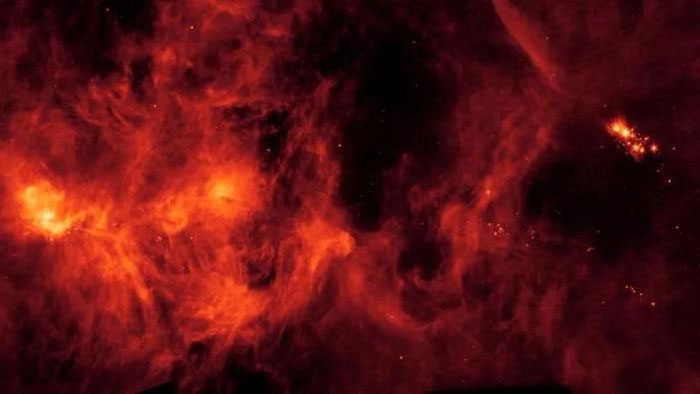The Spitzer Space Telescope of NASA has detected the presence of tryptophan within a “star nursery” that promises to birth numerous Earth-like planets.
Tryptophan is one of the 20 essential amino acids necessary for forming important proteins in living organisms on Earth. The signal of this vital organic material was represented through unique spectral lines in Spitzer’s observational data as it looked towards the Perseus Molecular Cloud.

The Perseus Molecular Cloud as seen in infrared light by Spitzer – (Image: NASA).
The Perseus Molecular Cloud is a well-known star nursery, measuring 500 light-years in diameter and containing many young stars, promising to produce numerous “copies” of the Sun, which will in turn create Earth-like planets.
The “golden” signal was detected in the region known as IC248 within this massive cloud of gas and dust, which contains material equivalent to 10,000 Suns.
“Evidence of tryptophan in the Perseus Molecular Cloud will encourage efforts to identify other amino acids in this region and other star-forming areas,” stated researcher Susana Iglesias-Groth from the Institute of Astrophysics of Canary Islands (IAC – Spain), as reported by Space.
According to her, the most interesting aspect is that these building blocks of proteins are commonly present in gas clouds where stars and planets will form, making them potentially key to the development of life on distant planets in the future.
Amino acids drifting between stars have also been shown in numerous previous studies to be the very origins of life on Earth: They enter young protoplanetary disks, seeding the materials that will form Earth or the meteorites that will later fall to Earth.
This discovery opens a window into the primordial past of our solar system, as this star nursery is estimated to be only 2-3 million years old, meaning its entities are still too “infant” compared to our ancient 4.5 billion-year-old world.
The findings were recently published in the Monthly Notices of the Royal Astronomical Society.





















































